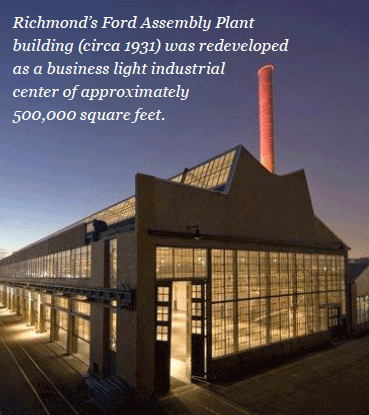Collaboration Promotes Economic Development and Advances Sustainability
Karalee Browne is a program coordinator for the Institute for Local Government and can be reached at kbrowne@ca-ilg.org.
Steve Sanders is co-director of ILG’s Sustainable Communities program and can be reached at ssanders@ca-ilg.org.
As California’s unemployment rate hovers almost two percentage points above the national average, cities are working to attract business investments that will bring jobs, skilled workers and new tax revenue. Local officials seek economic prosperity that is sustainable over the long term and not threatened by cycles of boom and bust. This requires:
- An effective strategy to attract and retain investments from businesses and employers based outside the community; and
- Understanding what stimulates new job creation, retention and expansion within the community.
When such efforts succeed, they not only build the local economy but also improve the quality of life.
Regional Effort Produces Results
Competition to attract employers can be fierce. While competition between neighboring cities and counties may spark economic activity, avoiding the rivalry that pits communities against one another can make it easier for cities to promote sustainability and improve their fiscal bottom line. A diverse group of cities and partners in the San Francisco Bay Area is showing that cooperation and collaboration among neighboring communities and the business sector can pay big dividends in new jobs that combine economic development with sustainability.
The East Bay Economic Development Alliance (EDA) is a public-private partnership of cities in Alameda and Contra Costa counties as well as businesses, universities, community colleges and community groups. The alliance convenes regularly to share information and strategies that advance regional interests. It also develops marketing materials and strategic relationships to attract and retain businesses and promote workforce development programs. Through this collaboration, city leaders learn about potential opportunities and contribute to the region’s future economic competitiveness.
Sustainable economic development strategies can generate growth by demonstrating that the best ways to increase jobs, incomes, productivity, fiscal stability and competitiveness over the long term involve innovation, efficiency and conserving resources — both natural and fiscal.
“There is a strong relationship between economic development and community development,” says Linda Smith, who serves as economic development director and public information officer for the City of Dublin and marketing chair for East Bay EDA. “You must always do the right thing for your community, but you need to be able to have a long-term vision of how it will affect the region.”
Local officials in the East Bay have learned that it is imperative to involve representatives who can communicate each jurisdiction’s interests while understanding the vision and competitive advantage for the region as a whole. When local resources are limited, cooperation allows cities to address their immediate essential services needs while planning for a more sustainable future.
The Code of Collaboration
To strengthen regional accountability and sustainable development within the region, the East Bay EDA adopted a code of ethics, including a “no raid” policy, which was adapted from a similar code of ethics created by the California Association for Local Economic Development (CALED). The premise is that businesses are more willing to invest in a region whose communities work together and understand its neighboring jurisdictions as well as its unique assets.
In the East Bay EDA’s ethics code, information sharing and transparency are paramount. If a company or organization intends to move from one locality to another within the region, members are expected to contact the affected community and inform them of the potential move. The guidelines first attempt to retain the company in the East Bay. If that is not possible, the organization extends information and assistance to retain the company in the Bay Area, then in Northern California and, finally, within California. Maintaining peaceful relations among the alliance’s members when marketing a particular community to outside firms is another important element of the ethics code.
Benefits for All
The code of ethics served the region well in 2011 when several members competed for a new campus of the Lawrence Berkeley National Laboratory, which conducts unclassified research across a wide range of scientific disciplines. The new campus development offered the potential to create thousands of jobs and transform its host city into a hub of energy research and innovation.
More than 20 cities, property owners and developers throughout the East Bay submitted bids when the University of California announced it sought to consolidate approximately 1,000 employees working in leased spaces in Walnut Creek, West Berkeley, Emeryville and Oakland into one central location. The university narrowed the field to six cities, which each offered sites along the waterfront and close proximity to the main campus in the Berkeley hills, and ultimately selected Richmond. The site offered open space for development, easy access to the freeway, public transportation and zoning already in place for light industry, and the university already owned the land.
The Richmond campus will host research focused on cancer, health, energy and the environment. The new development is expected to create thousands of jobs and inspire dozens of spin-off companies, nearby restaurants and retail businesses. Lab directors believe that the expanded research presence at the larger site will allow UC Berkeley to better compete for new federal programs, while neighboring cities are hoping to benefit from the industry growth and job creation.
Even though the communities in the East Bay competed to persuade the university to locate this valuable economic development asset in their jurisdiction, the history of collaboration and the code of ethics established through the East Bay EDA ensured that the competition was fair and civil, rather than a destructive exercise pitting cities against one another. “It was a great opportunity for everyone,” says Scott Peterson, deputy director of the East Bay EDA. “It mobilized cities to get everything in place to attract someone else.”
Collaborating on Regional Investments
This belief in the power of collaboration was demonstrated in the development of the nine-county Bay Area’s regional plan for transportation. The Association of Bay Area Governments (ABAG) and the Metropolitan Transportation Commission (MTC) are currently at work developing a long-term regional transportation plan for the Bay Area. The two regional agencies are also preparing a sustainable communities strategy as a key component of the plan. The sustainable communities strategy is a new element of the regional transportation plan intended to demonstrate how the nine-county region will meet regional targets to reduce greenhouse gas emissions from transportation, as required under SB 375 (Chapter 728, Statutes of 2008).
The regional transportation plan will guide the investment of tens of billions of dollars in new transportation infrastructure in the Bay Area over the next 30 years. These investments will have a substantial effect on the type, location and timing of new commercial and residential development and related economic activity throughout the region. The East Bay EDA organized a coalition in 2012 to work with ABAG and the MTC to ensure that the sustainable economic development opportunities of all of the East Bay communities are reflected in the final regional transportation plan and sustainable communities strategy.
Boosting the Economy
Local governments can boost their economy in both the short and long term by implementing a coordinated, collaborative approach with a specific focus on optimizing sustainable results. Engaging both neighboring communities and the private sector to harness their particular social, financial and managerial expertise is one way that local governments are able to set the playing field for sustainable economic development. A coordinated sustainable economic strategy can guide a city or region in creating a culture of stewardship, innovation and action that can lead to prosperity and future economic gains. In the process, collaboration over time can benefit the region’s residents — regardless of where they happen to live, work, play, study or visit.
This article appears in the May 2013 issue of Western City
Did you like what you read here? Subscribe
to Western City


